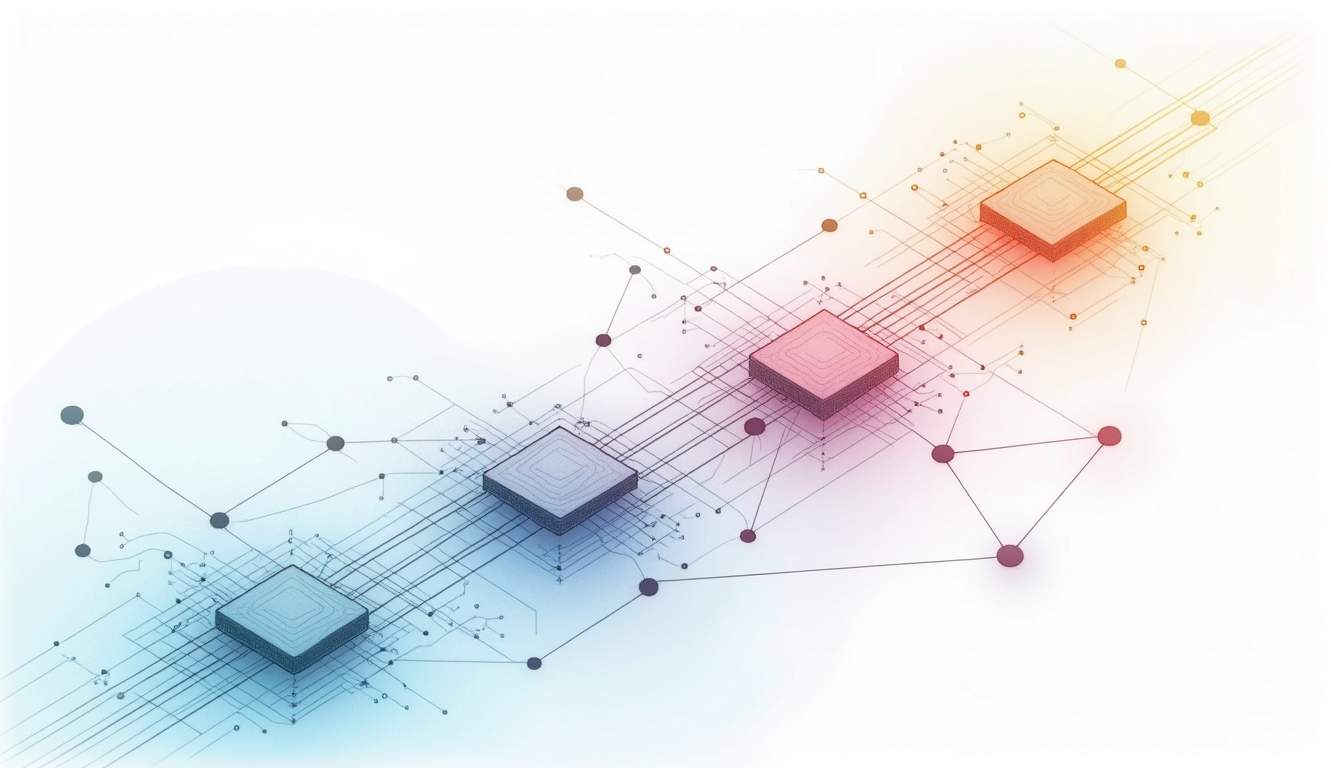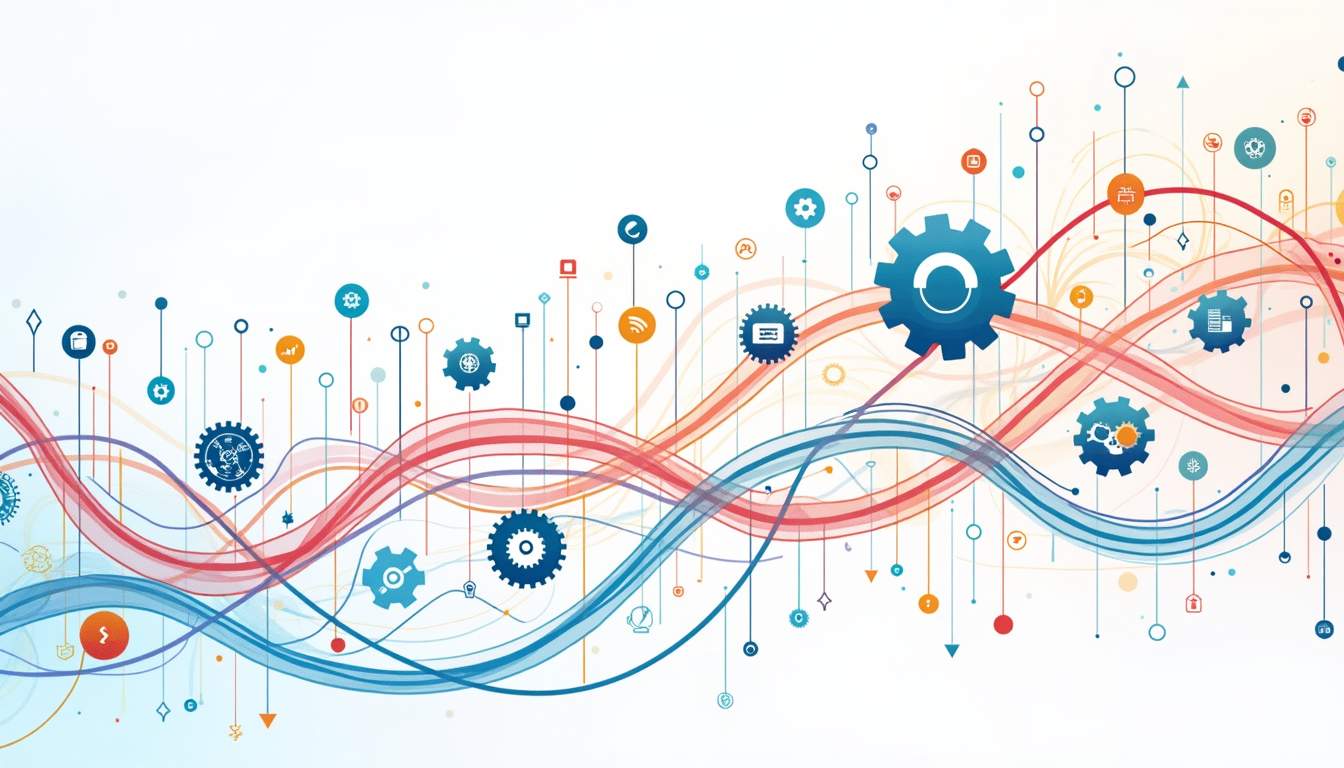AI Observability for Blockchain Networks Explained
As blockchain technology continues to evolve and integrate with artificial intelligence (AI), the need for robust observability in blockchain networks becomes increasingly critical. AI observability refers to the ability to monitor, analyze, and optimize AI-driven processes within blockchain infrastructures, ensuring reliability, performance, and security. This article explores what AI observability entails for blockchain networks, why it matters, and how it can be effectively implemented to support the growing demands of decentralized applications (dApps) and Web3 ecosystems.
Understanding AI Observability in Blockchain Networks
Observability in technology generally means having comprehensive insight into the internal states of a system by examining its outputs, such as logs, metrics, and traces. When applied to AI within blockchain networks, observability extends to monitoring AI models, data flows, and decision-making processes that influence blockchain operations.
Blockchain networks increasingly rely on AI for tasks like transaction validation, anomaly detection, predictive analytics, and network optimization. For example, AI can help identify suspicious activities or optimize routing of Remote Procedure Calls (RPCs) to reduce latency and downtime. Observability ensures that these AI components function as intended, providing transparency and actionable insights.
The Role of RPC Auto-Routing and AI
One key area where AI observability plays a role is in RPC auto-routing. RPC auto-routing automatically directs blockchain API calls to the most reliable and efficient RPC providers, balancing load and providing failover capabilities. AI models can analyze real-time network conditions, provider reliability, and latency metrics to dynamically route requests.
Observability tools track these AI-driven routing decisions, monitor RPC endpoint performance, and detect anomalies or failures. This visibility is crucial because RPC downtime can severely impact blockchain applications, leading to lost transactions, degraded user experiences, and financial costs. Understanding how AI optimizes RPC routing helps teams maintain high availability and reduce the risk of outages.
Why AI Observability Matters for Blockchain
Blockchain networks are decentralized, often operating across multiple cloud providers and geographic regions. This complexity introduces challenges in maintaining consistent performance and security. AI observability addresses these challenges by providing:
- Reliability Monitoring: AI systems managing blockchain infrastructure must be continuously monitored to detect failures or performance degradation. Observability enables rapid identification and resolution of issues.
- Security and Compliance: AI can detect unusual patterns indicating potential security threats. Observability ensures these detections are accurate and that AI models do not introduce vulnerabilities.
- Cost Optimization: By monitoring AI-driven routing and resource allocation, organizations can optimize cloud usage and RPC provider costs, avoiding overprovisioning or expensive outages.
- Scalability Insights: Observability data helps teams understand how AI models scale with increasing blockchain transactions and API calls, informing infrastructure improvements.
For example, multi-cloud RPC routing powered by AI can reduce latency and provide redundancy by intelligently selecting endpoints across regions and providers. Observability ensures these routing decisions are transparent and verifiable, supporting trust and performance in Web3 applications.
Implementing AI Observability in Blockchain Networks
Effective AI observability requires a combination of monitoring tools, data collection strategies, and analytical frameworks tailored to the unique demands of blockchain environments.
Key Components of AI Observability
- Telemetry Collection: Gathering logs, metrics, traces, and events from AI models, blockchain nodes, and RPC endpoints is foundational. This data reveals system behaviors and AI decision outcomes.
- Real-Time Analytics: AI observability platforms should process telemetry data in real time to detect anomalies, performance bottlenecks, or security incidents as they occur.
- Visualization Dashboards: Providing intuitive dashboards helps developers and operators understand AI system health, routing efficiency, and blockchain network status at a glance.
- Alerting and Automation: Automated alerts based on AI observability insights enable rapid incident response. Integration with orchestration tools can trigger failovers or scaling actions automatically.
Leveraging Multi-Provider and Multi-Cloud Architectures
AI observability is especially important when blockchain networks use multi-provider RPC routing and multi-cloud infrastructure. By distributing API calls across several RPC providers and cloud regions, blockchain applications improve reliability and reduce latency. However, this complexity demands sophisticated observability to track AI routing decisions and infrastructure health.
Google’s Multi-Cloud Proxy (MCP) technology is an example of how multi-cloud approaches enhance blockchain infrastructure. MCP can orchestrate API calls across cloud providers, improving scalability and redundancy. Observability tools integrated with MCP provide insights into AI routing efficiency and network performance, enabling Web3 developers to optimize their applications.
Challenges and Best Practices in AI Observability for Blockchain
While AI observability offers significant benefits, its implementation is not without challenges. Blockchain networks are inherently decentralized and often permissionless, making data collection and monitoring more complex than in traditional centralized systems.
Challenges
- Data Privacy and Security: Observability data may include sensitive information. Ensuring this data is protected and compliant with regulations is critical.
- High Volume and Velocity: Blockchain networks generate massive amounts of data and API calls. Observability systems must scale to handle this load without introducing latency.
- Complex AI Models: Understanding and interpreting AI decisions in routing or anomaly detection requires specialized tools and expertise.
Best Practices
- Adopt Multi-Provider RPC Routing: Use AI-powered multi-provider RPC routing to reduce single points of failure and improve observability granularity.
- Integrate End-to-End Telemetry: Collect comprehensive telemetry across AI components, blockchain nodes, and networking layers for full visibility.
- Use Open Standards and APIs: Employ open protocols for observability data to enable interoperability and future-proofing.
- Automate Incident Response: Combine observability with automation to quickly mitigate issues detected by AI monitoring.
The Future of AI Observability in Blockchain
As blockchain networks scale and AI becomes more deeply embedded in their operation, AI observability will transition from a luxury to a necessity. Emerging trends suggest several directions for the future:
- Increased Use of AI for Observability Itself: AI models will not only be observed but also employed to enhance observability by predicting failures and optimizing monitoring strategies.
- Integration with Decentralized Identity and Security: Observability data will be linked with decentralized identity frameworks to improve security and compliance.
- Standardization Across Web3: Industry standards for AI observability in blockchain will emerge, facilitating interoperability and shared best practices.
- Expansion of Multi-Cloud and Multi-Region Deployments: Observability tools will evolve to handle increasingly complex multi-cloud and multi-region blockchain infrastructures, ensuring global performance and reliability.
Ultimately, AI observability will empower blockchain developers and operators to build more resilient, efficient, and secure decentralized applications, accelerating the adoption of Web3 technologies worldwide.
Conclusion
AI observability is a vital component of modern blockchain networks, providing the transparency and insights needed to ensure AI-driven processes perform reliably and securely. By monitoring AI-powered routing, anomaly detection, and network optimization, observability helps mitigate risks such as RPC downtime and security breaches while enabling cost-effective scaling.
Implementing AI observability requires a strategic approach that combines telemetry collection, real-time analytics, and automation within multi-provider and multi-cloud environments. As blockchain and AI technologies continue to converge, investing in robust observability frameworks will be essential for developers and organizations aiming to lead in the Web3 era.
Ready to enhance your blockchain development with seamless AI observability? Uniblock, the Web3 infrastructure orchestration platform, is here to streamline your connection to blockchain data. With over 2,000 developers trusting us on more than 100 chains, our platform ensures maximum uptime, minimal latency, and cost savings by intelligently routing traffic through multiple providers. Say goodbye to vendor lock-in and scale your dApps, tooling, or analytics with ease. Start building with Uniblock today and experience the future of decentralized infrastructure management.
.svg)






